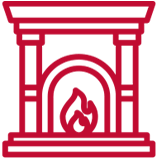The Best (and Worst!) Types of Wood for Your Wood-Burning Fireplace
Firewood is a key element of a warm fireplace, but not all firewood is created equal. Certain types of wood burn hotter longer and produce fewer fumes than others.
By choosing the appropriate firewood, you can enjoy a safer and more enjoyable burning experience while also being considerate of your surroundings.
There are many different types of timber and wood to burn and choose from. An extensive Guide to Safe Wood Types for Fireplaces is attached for further reading.
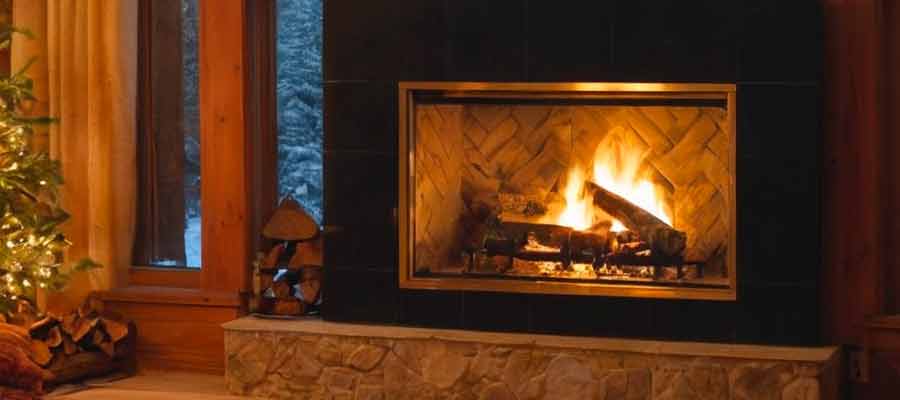
Green Wood vs. Seasoned Wood
Greenwood is freshly cut wood that is not seasoned. This wood does not need drying out afterward, either. A wood’s moisture content can impact its drying times, burning speed, and efficiency.
Since green wood holds 50 percent more moisture than seasoned wood, it produces less heat and much higher smoke levels.
Wood seasoned improperly will also combust more easily. Green wood’s moisture reacts with creosote, creating toxic acids that may affect eyes, noses, and throats and corrode chimneys. To best see what suits your needs, check out Identifying Fireplace Wood Compatibility.
 Hard vs. Soft Firewood
Hard vs. Soft Firewood
If you’re seeking Expert Advice on Fireplace Wood Selection, you’ve come to the right place.
Hardwood, derived from wide leaf, produces more heat than softwood from conifer. Neither is a ‘best wood’ per se, but both have their values as wood to burn in chimney fires.
Hard woods burn longer and emit less smoke than softwood when seasoned properly. Hard wood produces hot coals, which produce radiant heat that lasts longer than softwoods. Birches, pine, maple, and walnut are other hardwood species.
Hardwoods can easily catch fire but will contain more creosote than softwood trees. Softer wood helps with the burning process substantially, unlike oak.
Using some small pieces of soft wood, such as pine or tamarack, provides minimal kindling that can help prevent creosote formation.
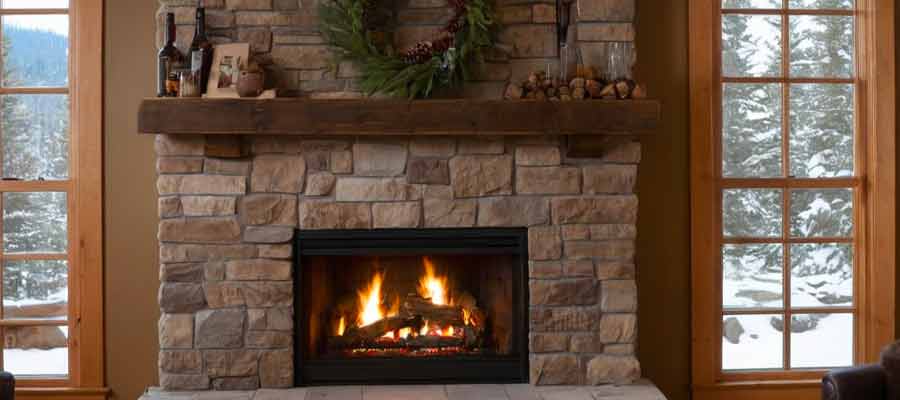
 Best Types of Wood
Best Types of Wood
Some firewood can be used in fireplaces because of its thick grain structure and high resin content, meaning the wood burns long and hot.
Hardwoods like oak, maple cherry, birch, and ash have the best qualities in firewood. Douglas-fir has fewer leftover sap pockets and produces less ash.
Our team also offers Chimney Inspection for Optimal Wood Burning in the Denver Metro to keep you better informed.
Recommended Wood Species for Indoor Fireplaces
Woods of various types produce varying amounts of firewood heat energy, measured in BTUs (British Thermal Units). Woods with higher BTUs will create more heat.
The best indoor firewood tips for a wood-burning stove or fireplace would be wood with a more powerful BTU rating.
Soft woods burn efficiently indoors, generating very little smoke compared to hard wood (which creates more ash residue) and help avoid creosote buildup.
Thus, this is the best wood to burn in a fireplace indoors or use in chimney fires with poor ventilation. Repairing Chimneys with Correct Wood Choices makes a huge difference.
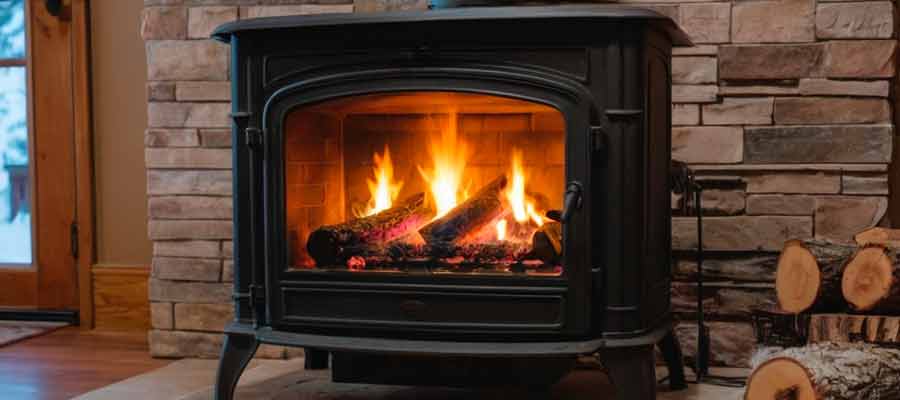
Hardwoods on Wood Stoves Stay Warmer Longer
Hardwood is derived from trees whose colors change or leaves disappear in autumn. Because it grows very quickly, hardwood is dense and has low moisture.
These characteristics make it ideal for burning outdoors since dry hardwood provides the most energy and lasts the longest. Hardwoods will be wood to burn, but they will differ in their accessibility and taste.
For more specific examples of how types of wood affect different chimneys, check out Impact of Wood Types on Brickwork and Ideal Wood for Chimney Liners.
 Dry Wood Produces More Heat & Less Smoke
Dry Wood Produces More Heat & Less Smoke
Dry wood burns faster and more effectively, as buying seasoned wood takes your fireplace to warmer places with a cozy atmosphere. For these reasons, seasoned firewood with high BTU stats is considered the best for wood stoves.
Avoid creosote build-up and maintain steady heat with as much wood on the fire as you see fit.
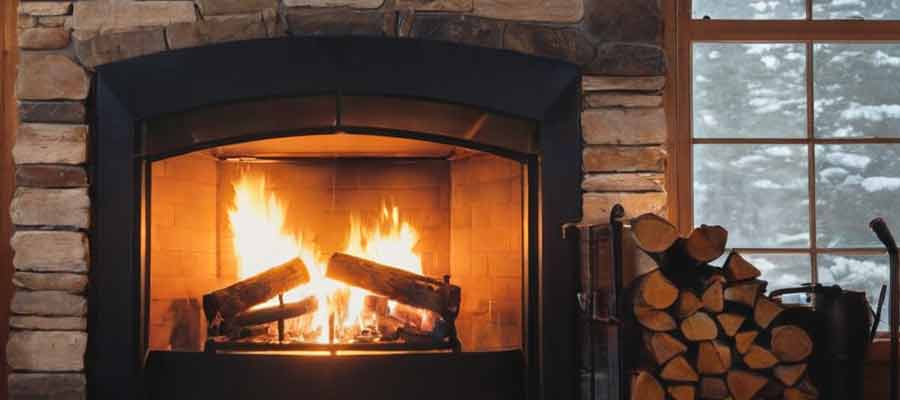
Less Moisture Means Easier Ignition
Wood with a lot of moisture causes frustration and disappointment. Wood that is too damp will not burn properly. Seasoning involves allowing wet wood to breathe air outdoors, which does not cause the wood to dry out properly.
Conversely, controlled drying conditions can reduce wood’s moisture levels by as much as 80%. Wet firewood is always difficult. For assistance, our team can help with Selecting Wood During Chimney Check-ups.
 You’ll Get Hotter and Longer-Lasting Flames
You’ll Get Hotter and Longer-Lasting Flames
Also, the low temperatures will give you better fuel! Dried wood burns quickly and effectively, generating a powerful fire that can keep your furnace running smoothly.
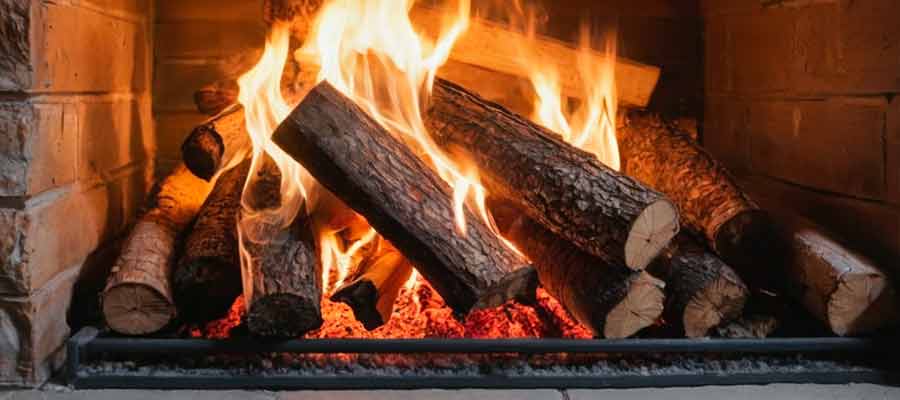
Are Kiln Dried Logs Better?
Wood may dry in a furnace. Kilns are air-controlled ovens that are designed to dry wood quickly. The wood also has much less moisture, so your fire will burn hotter & easier.
Seasoned logs are excellent for burning as they are easy and require considerable time, but they need some preparation. Kiln-burning logs can not burn hot enough when you purchase the product. Kiln-dried wood is effective, though not necessarily better.
In any fireplace, the best wood is dry wood. This is because kiln-dried wood has a lot of advantages, making the room feel more comfortable and healthier.
You should ensure the wood is dried at the kiln before using it. This also plays a significant role in Choosing Wood for Chimney Cap Effectiveness.
Kiln-Dried vs. Heat-Treated Firewood
Wood marked “kiln-dried” is dried in the kiln rather than out in the air.
It is used to remove wood moisture and hence produces longer and cleaner burns. Quality firewood should always be dried before it is boiled and not hot rolled to the right temperature.
 How to Prepare Wood for Fireplace
How to Prepare Wood for Fireplace
When you’ve had enough wood and the cut material has not burned yet, it’s too “green” or wet to burn; you can prepare it yourself or split wood.
If you have new wood-cutting tools and knowledge, it can be done quickly and easily on your wood stove. It is necessary to prepare appropriately to dry moisture in freshly cut logs. Before the wood can be dried, you must split the wood from each piece and prepare the new one.
Most wood will burn faster this way, especially if properly seasoned beforehand. This is also crucial to identifying the Best Woods for Chimney Health.
Finding quality firewood ready for your wood-burning fireplaces is often a big problem in any city. It makes for a perfect choice to do it yourself.
If you want to buy the logs at your favorite store or cut them alone, remember the key essentials of wood burning before purchasing. This is why our team offers Comprehensive Fireplace Services.
Also, be extremely cautious about purchasing painted materials. Never burn painted wood, as much heat from this may release harmful chemicals and cause a highly flammable substance.
For construction projects, only burn unpainted wood. When storing wood outside in outdoor storage, always put a plastic tarp. Wood attracts bugs, and the tarp will help with this potential issue.
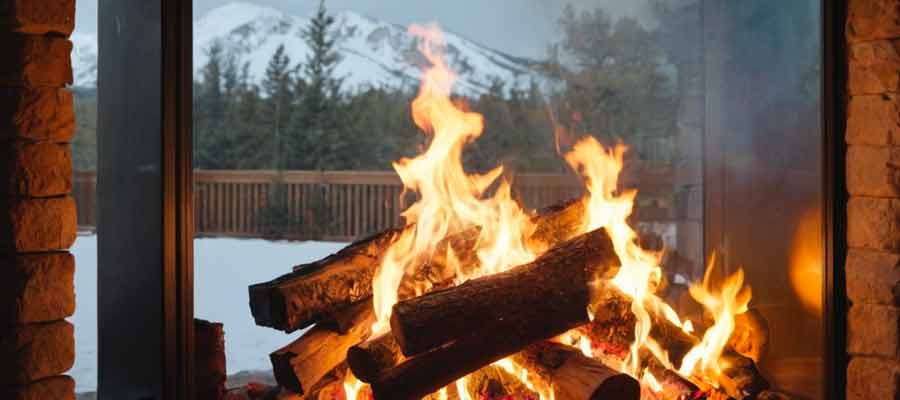
Oak: Hottest and Longest-Lasting
Oak is probably the most suitable wood for burning in a fireplace. Because of all wood types, oak has the longest burning time. A cord of oak firewood produces nearly a billion BTUs per year.
This is equivalent to burning a hundred gallons. With this much heat, you’ll also want to utilize our Firebox Repair accomodations.
So when you select oak for burn in a fireplace, your property should be very hot all year round. Oak wood’s high density also burns a great deal. Oak will provide the most intense and longest fires.
Douglas Fir: Fast-growing softwood
Douglas Fir trees grow rapidly, making them one of the favorite choices to support the reforestation of forests and sustainably harvested firewood. Douglas Fir is also an energetic softwood that can be ignited and split into two parts.
Approximately 25 million BTUs are generated by a fir tree, and wood generates moderate, steady temperatures.
Because of its rapid growth, fir tends to fall into lower to midrange heat releases per cord. This is a good choice year-round and for the holidays; nothing compares to the sweet evergreen smell of its efficient fire.
Using this wood will result in less repair and maintenance needs, but should you need them, check out our Denver Fireplace Repair.
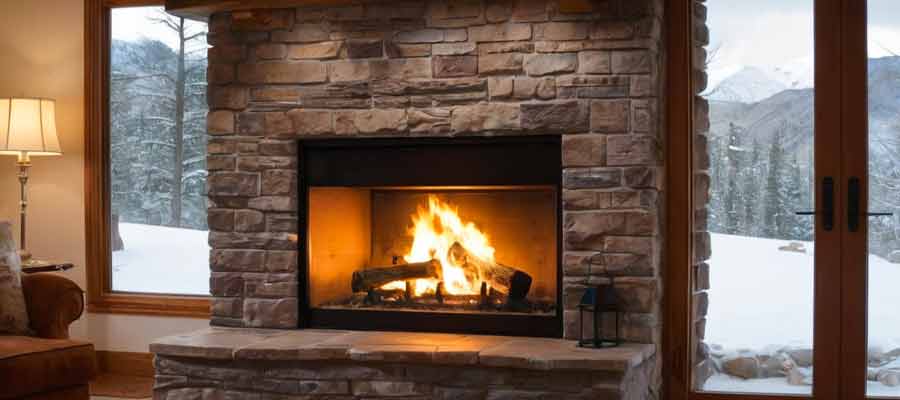
Ash: Long Burning, Low Smoke
Ash has an easily separated grain, minimal smoke, and an extremely durable burn. The ash produced between 191 and 243.6 million BTU/cr per cord.
Ash can be harder to source than oak. Tell your local supplier if they have an ash component in mixed-wood cords.
Complement ash with other hardwoods such as oak, lama, red maple, black maple, hard maple, silver maple, or oak. The ash has a low moisture level, meaning no long drying, and it can remain safe and durable to use in indoor fires.
Fruitwoods: Hot, Fragrant Fires
The fruit trees and softer woods produce low flame and high heat, generating an energy density of around 20-29 million BTU / c. Fruitwood is good for homes and outdoor fire pits, grills, and smokers.
Applewood is somewhat dense and easier to separate than softwood, but its efficient fire has been noted, especially for its fragrance. Applewood has the equivalent heat value to Oak and Ash and produces minimal smoking at moderate temperatures.
The temperature of cherries varies slightly. Apples, cherries, and pears are considered special woods used mostly for cooking, smoking, and special celebrations such as dinner parties and holidays.
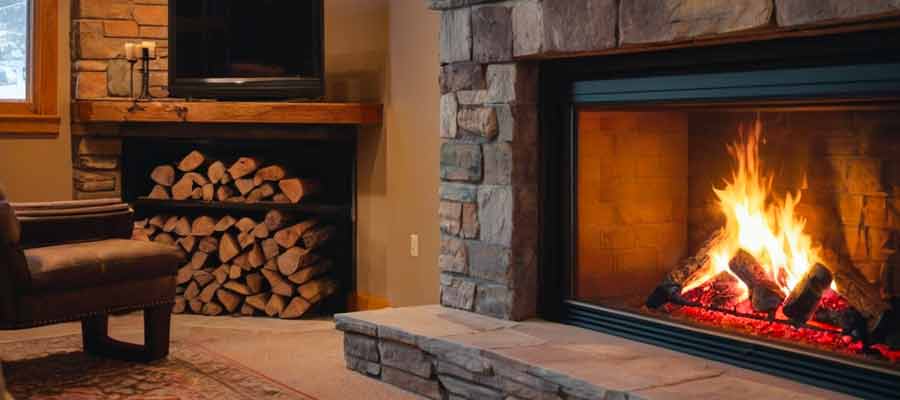
About Manufactured Logs
Fire can often be made with fabricated logs in supermarkets. They are typically made of compressed sawdust, copper sulfate, and paraffin wax.
While wood-burning stoves burn cleaner, they have been known to dislike this smell. If, due to the smell, you need a Chimney Sweep in Denver, we’ve got you covered.
Find the best hard woods for your tastes and location. The insects that could join other trees or wood from another place can cause problems.
Native trees understand how to combat pests but can’t protect themselves when unfamiliar bugs appear. Once these bugs settle into the new places, they can kill trees in forests or yards.
 What People Also Ask
What People Also Ask
What is the best type of firewood for a fireplace?
Due to its longevity and high heat output, oak is among the best choices available. A single cord of this seasoned wood produces nearly 29 million BTUs. That’s like burning around 250 gallons of fuel!
What wood should not be burned in a fireplace?
Woods that do not blaze well in the fireplace: Alder. It takes so much work to produce no results. Alders burn quickly and have surprisingly low temperatures.
Chestnut produces as much heat, smoke, and a weak flame. Gum proponates sparks, causing fire hazards. These are not ideal for Maintaining Chimney Crowns either.
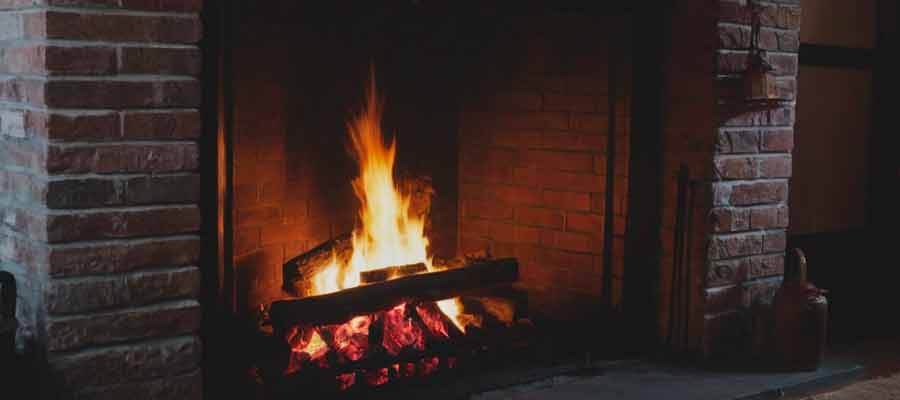
 What wood causes the most creosote?
What wood causes the most creosote?
Contrary to popular belief, hardwoods like poplar and oak produce more creosote than soft hardwoods like pine and tamarack.
What is the cleanest burning wood?
The cleanest burning wood is hardwood, specifically species like ash, maple, oak, and birch. These woods are highly regarded for superior slow-burning fire qualities for several reasons.
Firstly, hardwoods contain less sap and resin compared to softwoods. This results in a cleaner burn with significantly less creosote buildup, a common issue with softer woods. Creosote is not only harmful to air quality but also poses a serious risk of chimney fires.
Secondly, hardwoods have a higher density and energy content, meaning they burn longer and produce more heat. This efficiency is crucial for reducing emissions. When wood burns efficiently, it emits fewer pollutants.
These two kinds also help enormously with Wildlife Prevention in Chimneys.








